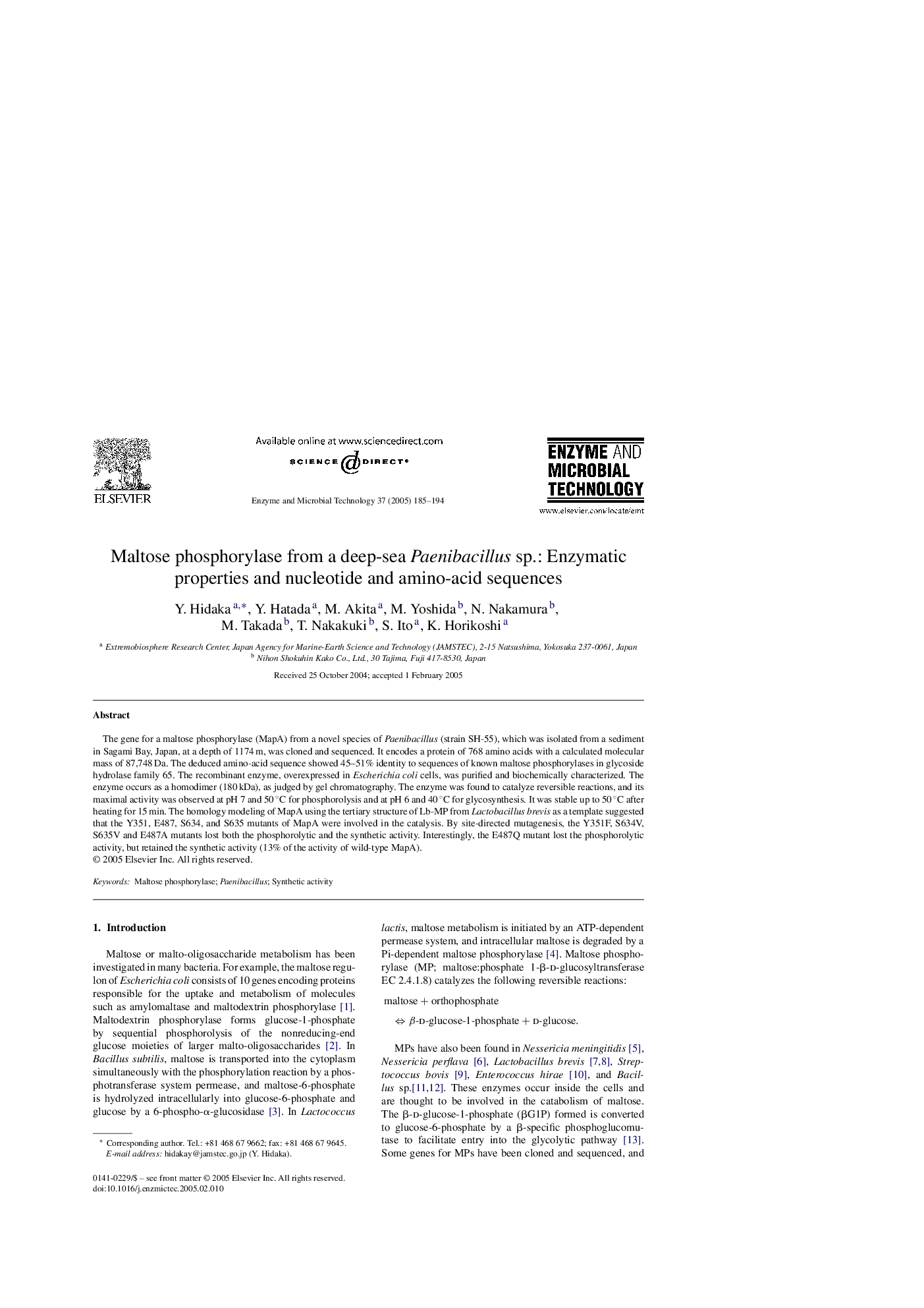| Article ID | Journal | Published Year | Pages | File Type |
|---|---|---|---|---|
| 10233419 | Enzyme and Microbial Technology | 2005 | 10 Pages |
Abstract
The gene for a maltose phosphorylase (MapA) from a novel species of Paenibacillus (strain SH-55), which was isolated from a sediment in Sagami Bay, Japan, at a depth of 1174 m, was cloned and sequenced. It encodes a protein of 768 amino acids with a calculated molecular mass of 87,748 Da. The deduced amino-acid sequence showed 45-51% identity to sequences of known maltose phosphorylases in glycoside hydrolase family 65. The recombinant enzyme, overexpressed in Escherichia coli cells, was purified and biochemically characterized. The enzyme occurs as a homodimer (180 kDa), as judged by gel chromatography. The enzyme was found to catalyze reversible reactions, and its maximal activity was observed at pH 7 and 50 °C for phosphorolysis and at pH 6 and 40 °C for glycosynthesis. It was stable up to 50 °C after heating for 15 min. The homology modeling of MapA using the tertiary structure of Lb-MP from Lactobacillus brevis as a template suggested that the Y351, E487, S634, and S635 mutants of MapA were involved in the catalysis. By site-directed mutagenesis, the Y351F, S634V, S635V and E487A mutants lost both the phosphorolytic and the synthetic activity. Interestingly, the E487Q mutant lost the phosphorolytic activity, but retained the synthetic activity (13% of the activity of wild-type MapA).
Related Topics
Physical Sciences and Engineering
Chemical Engineering
Bioengineering
Authors
Y. Hidaka, Y. Hatada, M. Akita, M. Yoshida, N. Nakamura, M. Takada, T. Nakakuki, S. Ito, K. Horikoshi,
